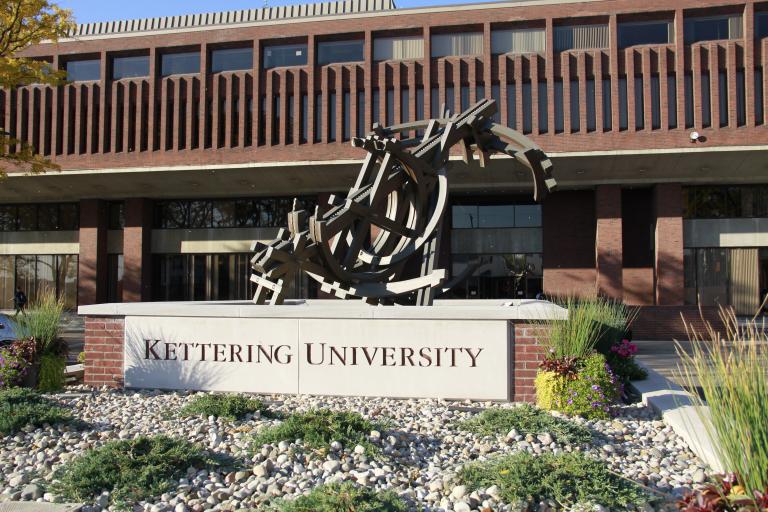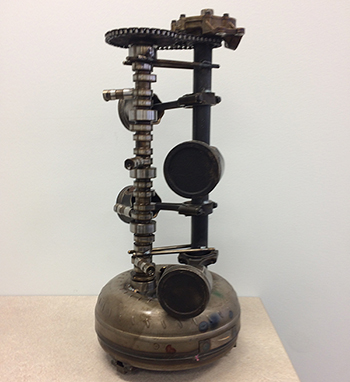
Brennen Proudfit ‘20, Mechanical Engineering, reflects on a sculpture he created for the Introduction to Humanities class at Kettering University.
During the Fall term, I was assigned a creative autobiography project in Dr. Stephen Grandchamp’s Introduction to Humanities (HUMN-201) course. When I first received this assignment and found out that I would be able to pick my own medium, I knew right away I didn't want to write a short story because the assignment length was too short for me to thoroughly reflect my life. Instead, I wanted to build something with the mechanical skills I learned from working on vehicles and in coursework at Kettering to make the project more representative of my experience as an engineer. 
Actually, I had just finished tearing apart a motor to rebuild my truck, and I immediately started brainstorming what I could do with all of my parts and how I could assemble them. At first, I thought I could create an abstract sculpture and just throw the parts together and make up stories to go along with them. Instead, I decided it would be best to actually try and assemble the parts I had to represent an engine.
Then, I could relate these engine parts to their function and how I need to function in life in a similar way—a strategy that made the sculpture more meaningful to me. In the end, this sculpture made of truck parts symbolizes the development of my mechanical and problem-solving skills through energy efficiency and a strong work ethic in my coursework at Kettering.
To create the sculpture, I used a torque converter, camshaft, rods and pistons, tube, and an oil pump. I fitted each of these parts together in order to represent an actual motor as well as my own development as a mechanical engineer. For example, the torque converter is the base and biggest part of the sculpture. I decided to use the torque converter because, as a part of a transmission, I had a formative experience while solving transmission problems in which I learned to reduce the amount of transmission wear on my truck. This was an important experience for me to continue exploring mechanical and problem solving skills at Kettering. Moreover, the torque converter represents the necessary skill of transferring energy to appropriate tasks—a skill that I have had to develop and utilize throughout my educational experiences at Kettering.
I also used an oil pump in the sculpture to symbolize that professional goals, like a motor,
require energy to create motion. As the crankshaft spins, it allows the oil pump to cycle oil through the motor. This motion represents how hard work and dedication to education contributes to professional knowledge that I will utilize later. Overall, this component allowed me to reflect upon the experience of working and going to school at Kettering as a way to develop my work ethic.
In the end, this sculpture helped me communicate the importance of education as a way to achieve my professional goals as a mechanical engineer. Like building my truck, acquiring this education requires a strong base of knowledge and a surplus of energy. I’m happy that this sculpture was able to capture this process and Kettering’s important place within it.